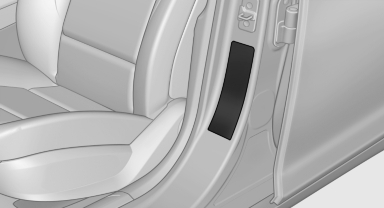Determining the load limit

1. Locate the following statement on your vehicle’s placard:
► The combined weight of occupants and cargo should never exceed XXX kg or YYY lbs. Otherwise, damage to the vehicle and unstable driving situations may result.
2. Determine the combined weight of the driver and passengers that will be riding in your vehicle.
3. Subtract the combined weight of the driver and passengers from XXX kilograms or YYY pounds.
4. The resulting figure equals the available amount of cargo and luggage load capacity.
For example, if the YYY amount equals 1,000 lbs and there will be four 150 lbs passengers in your vehicle, the amount of available cargo and luggage load capacity is 400 lbs: 1,000 lbs minus 600 lbs = 400 lbs.
5. Determine the combined weight of luggage and cargo being loaded on the vehicle. That weight may not safely exceed the available cargo and luggage load capacity calculated in Step 4.
See also:
The concept
The rear view camera assists you when parking
and maneuvering in reverse. To accomplish this, the region behind your vehicle
is shown on the
Control Display. ...
Malfunction of driving stability control systems
Adapting your driving style
When driving on poor roads, avoid using
full throttle or pressing the accelerator beyond
the kickdown point and also avoid heavy braking.
Otherwise, the drive train ...
The concept
backup camera, refer to page 112, can be
switched on.
PDC supports you when parking. A slow approach
to an object in front of or behind your vehicle
is announced by:
▷ Signal tones.
...
